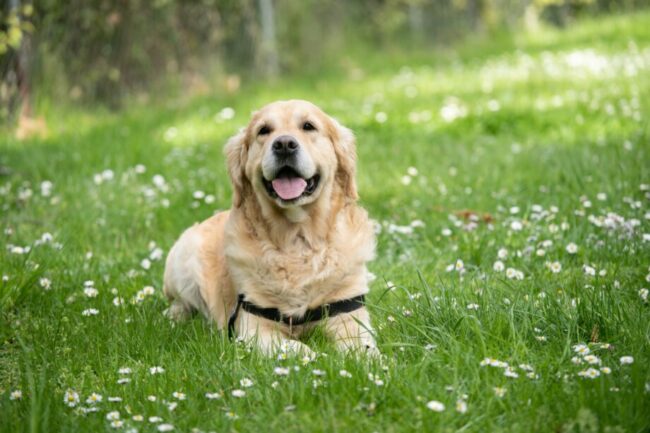When it comes to our canine companions, understanding their reproductive cycle is essential for both breeding purposes and general care.
A dog in heat undergoes a myriad of changes both physically and behaviorally. Let’s delve deep into what these changes mean and why they occur.

The Phenomenon of Estrus
Estrus, colloquially known as ‘heat,’ is a vital part of a female dog’s reproductive journey. This phase signifies her readiness to mate and reproduce. A surge in estrogen levels is observed initially, which subsequently plummets, signaling the release of eggs from her ovaries.
Accompanying this are certain physical indicators, such as a bloody vaginal discharge. If you aren’t planning on breeding, spaying your dog is a responsible choice.
Duration of the Heat Cycle
The average female dog will experience her heat cycle for 2 to 3 weeks. However, certain breeds, like the Chihuahua, might experience it for 3 to 4 weeks. The onset of the first heat can vary, with smaller breeds typically starting earlier than larger ones.
It’s crucial to note that a female isn’t always receptive to males throughout her cycle. The actual fertile window, where she is most receptive, can be around the ninth to the tenth day, lasting for approximately five days.
Yet, conception can occur until the cycle ends. Establishing a regular cycle can sometimes take up to eighteen months, so patience and observation are key.
Commencement of the Heat Cycle
A dog’s reproductive maturity can range between six months to two years. This variation is predominantly influenced by breed size. If considering breeding, waiting until the third cycle, generally between 18 to 24 months, is recommended. Consulting a veterinarian can provide clarity on the right time for breeding.
Frequency of the Heat Cycle
Though generally observed biannually, the frequency can vary. Smaller breeds may experience it up to four times a year, while larger breeds might only go through it once a year. Consistency in cycles can take time, especially in younger dogs.
Why Such a Prolonged Heat Cycle?
The prolonged heat cycle in dogs facilitates the mating process. Observable behaviors include blood discharge, swollen vulva, and even aggressiveness towards male dogs. The ultimate aim is to ensure the female attracts a suitable mate.
Interestingly, while humans have their menstruation cycles that can be discomforting, dogs handle their heat with relative ease. They vocalize or ‘cry’ primarily to signal their readiness to potential mates.
Stages of the Heat Cycle
| Stage | Duration (in days) | Signs/Symptoms |
|---|---|---|
| Proestrus | 9 | Swelling of the vulva, vulvar discharge. Male dogs are attracted to her. |
| Estrus | 9 | Softening of the vulva, straw-colored discharge. Males can mount and breed her. |
| Diestrus | 60 | Milky odorless discharge early on, which then stops mammary development and lactation. Successfully bred females are pregnant. Some may experience slight lethargy. Males are no longer interested. |
| Anestrus | 100–150 | No physical or behavioral changes. |
Detecting Pregnancy in Dogs
Unlike humans, detecting pregnancy in dogs isn’t about cravings or mood swings. Telltale signs include a decrease in activity, changes in appetite, weight gain, and nipple growth. As she progresses, behavioral changes, nesting behaviors, and increased affection might be observed.
Recognizing a Dog in Heat
Physical symptoms like a swollen vulva and bloody discharge are obvious indicators. However, behavioral changes such as increased alertness, agitation, and distraction also hint at a dog in heat. The female often becomes receptive to males once the discharge reduces in volume and blood content.
In Conclusion
The heat cycle in dogs is a complex yet fascinating process. Recognizing the signs helps owners provide the necessary care and environment for their pets. For those not planning on breeding, spaying is highly recommended, not only to avoid unplanned litters but also to prevent potential health issues.
Always ensure your pet is supervised during this time, and regular health checks are paramount for her well-being.

Editorial Staff
Our writers, editors, content managers, and SEO specialist. We all take part in crafting amazing articles. We spend hours ensuring that each article is based on facts, researched, and thorough. You'll never want to click the back button to look for more answers other than here!
